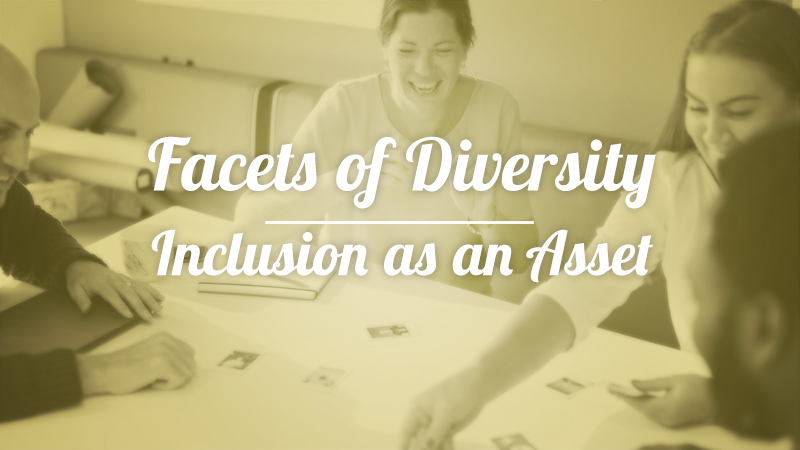Facets of Diversity: Inclusion as an Asset

Diversity is a major issue today for our country, communities and, of course our libraries. As our service areas are changing and growing, inclusion of individuals from our various communities within our communities is vitally important. Diversity should focus on race and ethnicity, but age, gender, class, sexual orientation, religion, disability, experience, background & expertise, and other factors depending on the local area are also important to consider.
Diversity is often framed primarily as a value. This framework is built on foundations of belief, faith, and social justice. Diversity as a value is an important and vital perspective, but it can also be one that can lead to divisions, as values vary from individual to individual and community to community.
Public service is another aspect of diversity and inclusion for libraries as public institutions. With a goal of being open and accessible to all, service to various communities is often hindered or stymied if our staff, board, facilities, and processes are not inclusive of all constituents and perspectives. Practically, diversity and inclusion are essential to good public service.
But another aspect of diversity for any organization – as an asset – is often overlooked. Having a broad-based diversity and inclusion program at your library can and will bring resources to your organization, and increasingly is a critical perspective in securing the long-term future of the library. Framing diversity as an asset and resource issue may also help to promote inclusion as an ongoing issue and area for growth and development with key stakeholders. Agreement on diversity as an asset building activity can be an easier and more productive discussion than a values-based approach.
So how is diversity an asset? Here is a short list of ways in which inclusion brings new or expand resources:
- Increases uses – as many libraries struggle with declining numbers, reaching out to new constituencies helps increase uses, which then can lead to further funding, additional volunteers, etc.
- Impacts the community – while not all “diverse” communities are in need, inclusion may help serve people with the greatest needs in a community. This, in turn, can lead to the strongest arguments for the library as an essential service.
- Keeps library relevant – as our community demographics continue to change, it is imperative that library services and resources remain relevant. Inclusion ensures relevancy, which again leads to future resource development.
- Fosters advocacy – as libraries make the ongoing argument for public support, serving all corners of the community increases the likelihood of strong public funding.
- Advances philanthropic support – major foundations and corporate funders often measure their support, in part, on service to diverse communities, but as our demographics change, individuals from varied constituencies are playing an increasing role as contributors to private support for our libraries.

